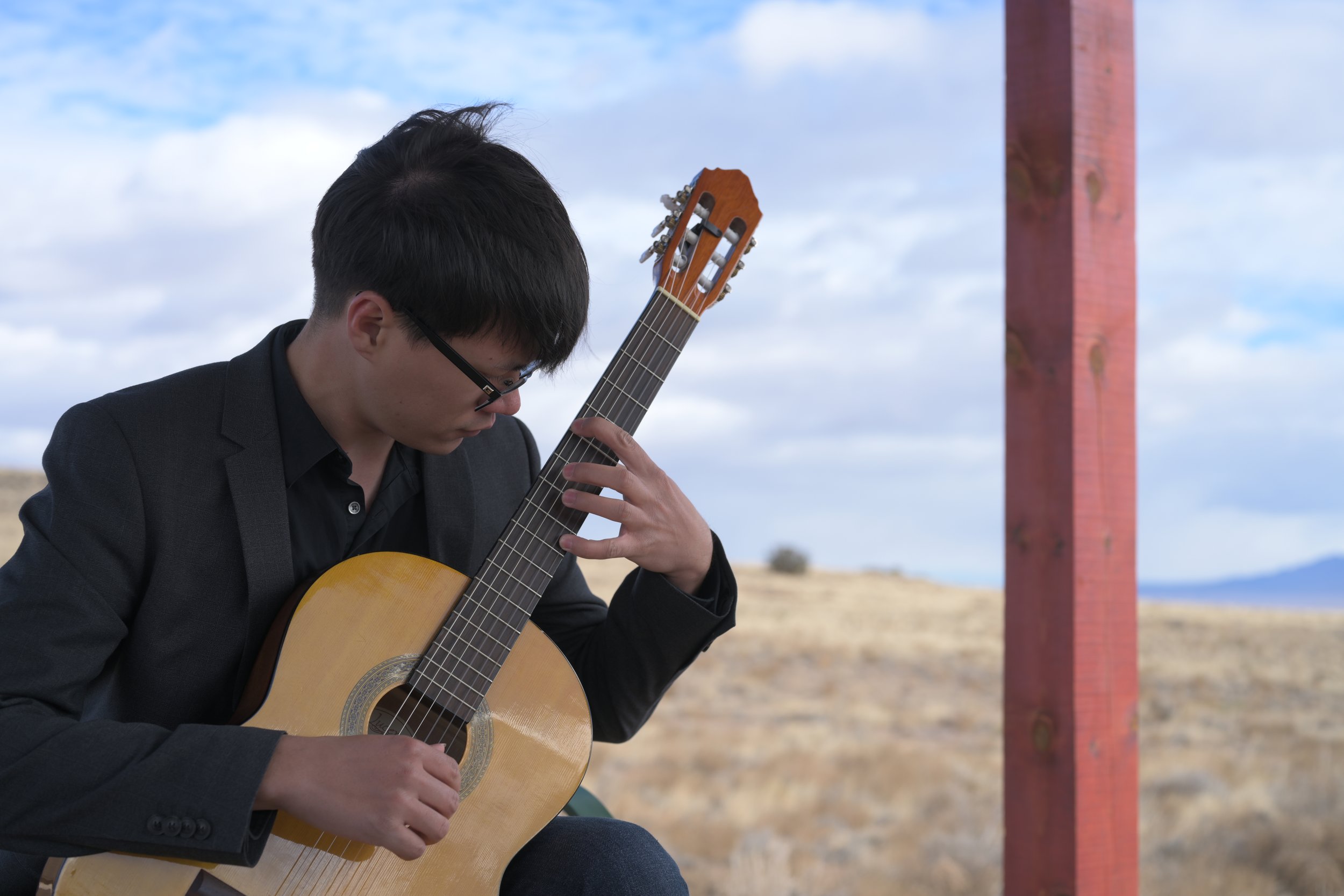Adapt, React, Readapt, Apt
Here is a series of photos documenting the making of the Elegy by Jeremy Collins video. I’ve recorded a few music videos with my good friends Andrew Chu and Sean Taylor who have generously lent their time and skills to these projects. I was grateful that they were both able to join me on this project. All set photos taken by Andrew Chu.
Recording the audio
I first record and edit the audio before filming because I have to “lip-sync” my playing while we record the music video. The syncing helps make the video editing process significantly easier.
Filming
Change of plans
The winters in New Mexico are notoriously deceiving and hard to plan around. While it was a moderate 40 F in the Metro, the high winds and exposed nature of the Petroglyphs made it nearly impossible to play the guitar. My hands would freeze up within a couple minutes of playing (if I was lucky). Here, Sean and I discuss our options and what else we could possibly do.
Adapt
As I have gone through the process of shooting a few music videos, I have learned that it is important to have a plan and to be as prepared as possible. That being said, it is just as important to be willing to throw that plan out the window if need be.
We changed course and decided to shoot a video lit by candle light, indoors. In the wise words of Michael Scott, one must be able to “adapt, react, readapt, apt”.
“Final” Result
After testing multiple options, this is the shooting set -up we settled on. I had to sit on the ground so that the candle light could light my entire face. When I was sitting in the chair, there wasn’t quite enough light to make the shots work.
We recorded 5-6 angles so we had plenty of options for the editing process, where the video actually comes together.














